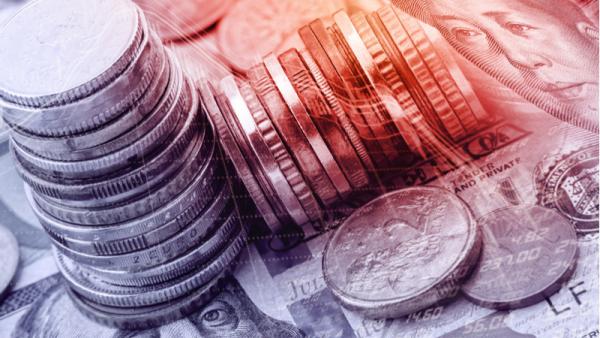
James Laurenceson, Deputy Director, Australia-China Relations Institute, University of Technology Sydney |
This article appeared in East Asia Forum on October 11 2017.
An enthusiastic, if somewhat odd-looking debate has flared in Australia this year about whether China or the United States is the country’s most important economic partner. The debate has served a useful role in highlighting the respective arguments and putting numbers and analysis into the public domain. But the reason the debate is taking place is rarely declared up front.
After all, everyone agrees that China is Australia’s biggest trade partner and the United States is Australia’s biggest investment partner. So why does one country need to stand above the other to claim the crown of Australia’s most important economic partner? Are strong relationships with both mutually exclusive in a highly interdependent world?
It’s telling that apart from the debate featuring Australian commentators, the claim to being Australia’s most important economic partner is only coming from one foreign government — the United States.
The Chinese ambassador in Australia and visiting Chinese leaders have certainly highlighted the data that show China is Australia’s leading trade partner and an important economic partner, but have been happy to leave it at that.
In contrast, earlier this month the acting head of the US embassy in Australia went a little further. After ticking off the benefits of the Australia–US investment relationship, he told a Canberra audience: ‘And that’s why we are Australia’s most significant economic partner’.
He delivered the same line in the opinion pages of The Australian in June: ‘The US is Australia’s leading economic partner; our bilateral economic engagement is at [US]$1.9 trillion and growing’.
And when US Vice President Mike Pence visited Australia in April, there it was again: ‘the United States is far and away Australia’s largest economic partner — not just in this region, but across the wider world’.
When passing through Sydney in June, US Secretary of State Rex Tillerson sang from the same hymn sheet: ‘if you look at the total of foreign direct investment by the United States in Australia as well as our actual trade, we are the largest trading partner by those two measures with Australia’.
The consistency of messaging is impressive.
Meanwhile, the Australian public overwhelmingly takes the view that the country’s most important economic partner is China.
There is plainly a US concern, shared by some local commentators, that this public sentiment might see Australia drift towards China.
Add in US President Donald Trump’s disastrous popularity ratings in Australia — a Pew Research poll in June found 70 per cent of Australians have ‘no confidence’ in the President ‘to do the right thing regarding world affairs’ — and it’s not hard to see why the panic button is being hit.
If only the Australian public could be persuaded that the United States is Australia’s most important economic partner, as well as its security ally, then the political environment for pushing back against those advocating for a foreign policy that exercises ‘greater independence within or at times without the alliance’ might be easier.
But the economic facts on the ground are that over the past five years the combined value of Australia’s trade and investment flows with China has been double that with the United States.
To such data, Simon Jackman, Chief Executive Officer of the United States Studies Centre has ventured: ‘we shouldn’t equate trade dollars with investment dollars, and direct investment in particular. Our trade with China is valuable on the balance sheet, but shouldn’t be equated with the nation-building legacy of decades of ‘here-to-stay’ direct investment’.
But no economic theory or textbook says that trade dollars are different from investment dollars or that the former is inferior for its impact on living standards.
When Rio Tinto sells iron ore to Chinese steelmaker Baosteel, or the University of Sydney sells education to a young professional from Beijing, this becomes Australian income and can be spent on consumption (and purchases at home or abroad) or saved.
More consumption boosts living standards today.
More savings funds increased investment, which just like investment from the United States, generates returns that raise consumption and living standards in the future.
Recall that since 2012 Australian exports to China were worth AU$438 billion (US$346 billion), AU$346 billion (US$273 billion) more than to the United States. That US$273 billion difference is a contribution to living standards today, or alternatively, to plough into investment and raise living standards tomorrow. During the same period, US direct investment in Australia exceeded that from China by only AU$51 billion (US$40 billion).
Yes, some US investment may come bundled with technology not available from any other source. Still, given the numbers above it would take some heroic assumptions around the returns to US investment to conclude that the benefits of Australia’s economic relationship with China have been surpassed.
And these days the idea that US technology is always superior needs fact checking. A report by Deloitte earlier this month found that China had produced 98 unicorns — start-ups now valued at more than US$1 billion — or 39 per cent of the global total. This is only marginally behind the United States with 42 per cent. India was third with just 4 per cent.
To be sure, Australia has plenty of reasons to prioritise its relationship with the United States — shared values like a liberal democracy and a number of common security interests for a start. And it might be easier for Australian policymakers if the United States were also the country’s most important economic partner. But wishful thinking serves as a poor basis for pursuing the national interest and the reality is that this distinction is now held by China.
Author
Professor James Laurenceson is Deputy Director of the Australia-China Relations Institute at the University of Technology Sydney.


